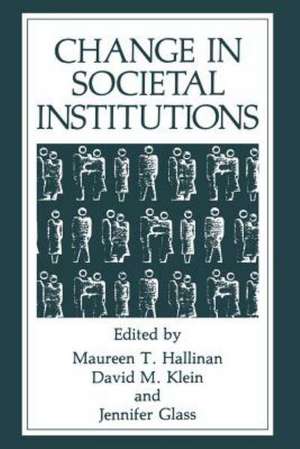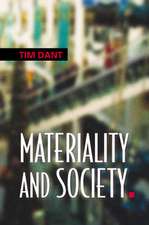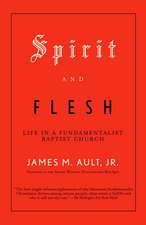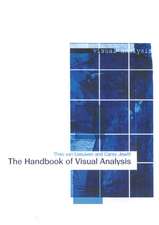Change in Societal Institutions
Editat de J. Glass, Maureen T. Hallinan, D. Kleinen Limba Engleză Paperback – 17 sep 2011
Preț: 387.38 lei
Nou
Puncte Express: 581
Preț estimativ în valută:
74.14€ • 76.59$ • 61.70£
74.14€ • 76.59$ • 61.70£
Carte tipărită la comandă
Livrare economică 26 martie-09 aprilie
Preluare comenzi: 021 569.72.76
Specificații
ISBN-13: 9781461278986
ISBN-10: 1461278988
Pagini: 296
Ilustrații: XVI, 292 p. 6 illus.
Dimensiuni: 152 x 229 x 16 mm
Greutate: 0.4 kg
Ediția:1990
Editura: Springer Us
Colecția Springer
Locul publicării:New York, NY, United States
ISBN-10: 1461278988
Pagini: 296
Ilustrații: XVI, 292 p. 6 illus.
Dimensiuni: 152 x 229 x 16 mm
Greutate: 0.4 kg
Ediția:1990
Editura: Springer Us
Colecția Springer
Locul publicării:New York, NY, United States
Public țintă
ResearchCuprins
1. The Decline of Occupations: Redefining the Labor Force.- Occupation and a New Workplace Revolution.- The Traditional Significance of Occupations.- Recent Labor Force Developments.- The Declining Significance of Occupation.- Conclusion.- References.- 2. Women, Work, and Family: Changing Gender Roles and Psychological Well-Being.- Employment and Marriage.- Employment and Children.- Women’s Work.- Conclusion.- References.- 3. Gender and the Structural Transformation of the Legal Profession in the United States and Canada.- The Demographics of Professional Growth in the United States and Canada.- The Segmentation and Stratification of Legal Practice.- Partnership, Profit, and Pleasure in Practice.- Power in Practice.- Lawyers’ Lives and the Structural Transformation of Legal Practice.- References.- 4. The Changing Composition of Schools: Implications for School Organization.- Changes in the Makeup of Schools.- Effective Schools Research.- The Organization of American Schools.- On the Significance of Social Ties.- On Networks and Learning.- Networks and Culture.- The Tasks Ahead.- References.- 5. Single Parents and the Schools: Effects of Marital Status on Parent and Teacher Interactions.- Theoretical Perspectives.- Sample, Variables, and Approaches.- Results: Parents’ Reports of Teachers’ Practices of Parent Involvement.- Teachers’ Reports of Single and Married Parents’ Helpfulness and Followthrough.- Parents’ Awareness, Knowledge, and Evaluations of Teachers.- Other Reports about School from Single and Married Parents.- Summary and Discussion.- References.- 6. The Changing Contours of the Teaching Profession.- Trends in Attrition.- Attrition Rates in the National Longitudinal Study.- Who Left Teaching and Who Wants to Return?.- Teacher Attrition andTeacher Qualifications.- Schools and Patterns of Attrition among Teachers.- Conclusions.- References.- 7. Contradiction and Change in Organized Religion: Roman Catholicism in the United States and Spain.- Organizational Demography and the Catholic Church.- Population Change and the Demographic Transition.- Data and Methods.- Analysis.- Discussion.- References.- 8. The “Unmaking” of a Movement? The Crisis of US. Trade Unions in Comparative Perspective.- Unionization before and during the Decline.- Theoretical Explanations of the Decline.- Analyzing the Decline.- “Explaining” the US. Density Reduction.- Conclusion and Implications.- Data Appendix.- References.- 9. Medicine, the Medical Profession, and the Welfare State.- Medicine’s Professional Project.- Medicine and the Welfare State.- Costs and Controls.- The Rise of Bioethics.- Professions and Proprietors.- The Limits of Professionalism.- References.- 10. Mass Media and Public Opinion: Emergence of an Institution.- Mass Society Revisited.- The Emergence of a Public Opinion.- Convergence of Mass Media and Public Opinion.- Emergence of an Institution.- New Mass Media.- Conflict with Other Institutions.- Conflict with the Family.- Conflict with Education.- Conflict with Religion.- Conflict with the Polity.- The New Institutional Paradigm.- Summary.- References.- 11. Things Fall Apart: Americans and Their Political Institutions, 1960–1988.- Decline of Political Participation.- Decline of Political Parties.- Decline of Traditional Forms of Political Consciousness.- Conclusion.- References.- 12. Institutional Analysis: An Organizational Approach.- Early Conceptions.- Introductory Textbooks.- Critique of Institutional Theory.- Organizational Institutional Analysis.- The Structure of Institutional Complexes.-Conclusions.- References.















